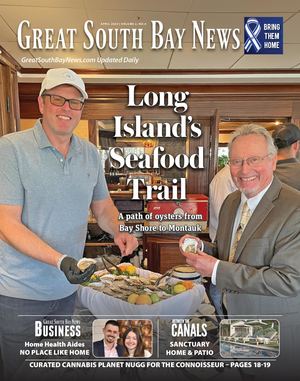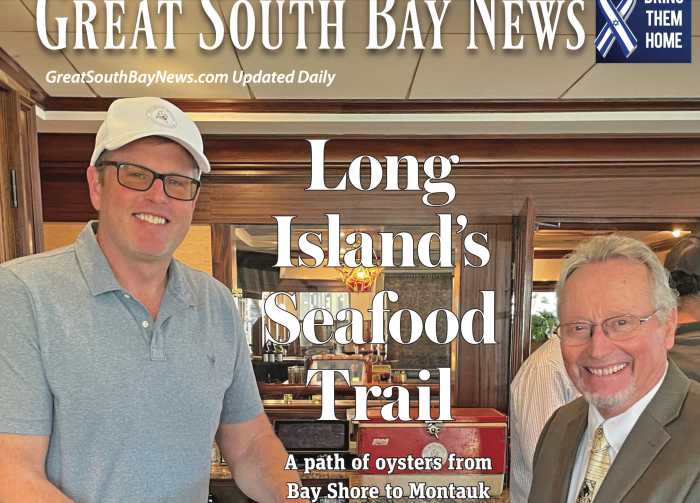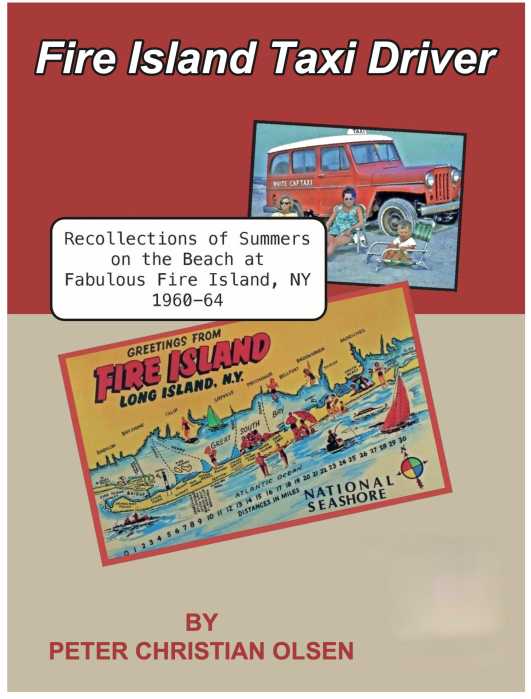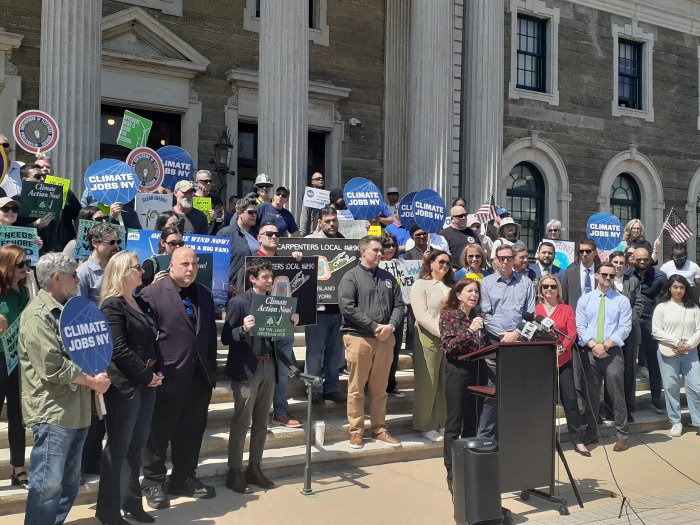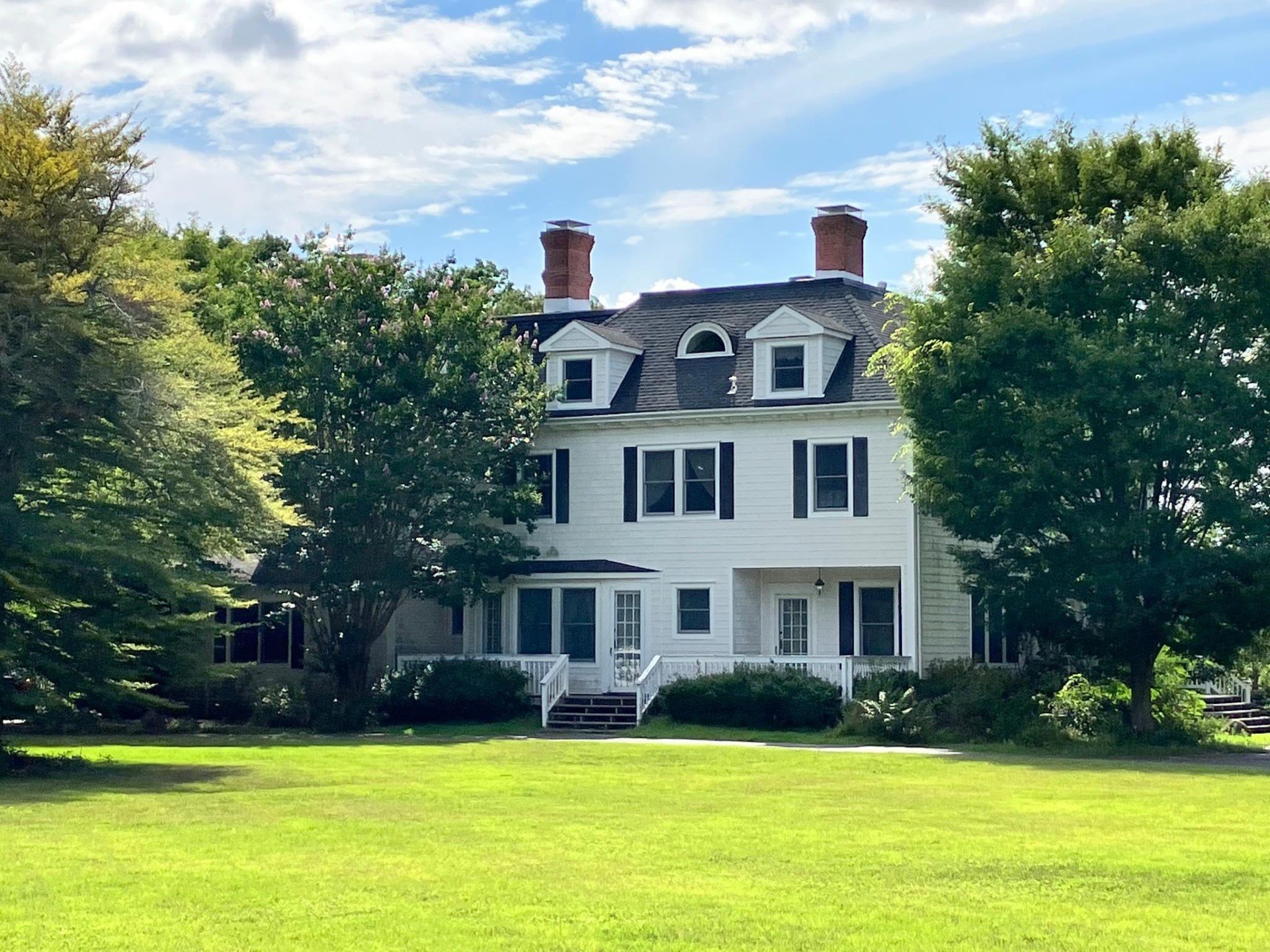
The former Oppenheimer family homestead on South Saxon Avenue in Bay Shore.
When the first atomic bomb was successfully tested on July 16, 1945, in the desert of Los Alamos, New Mexico, chief engineer Julius Robert Oppenheimer famously stated:
“If the radiance of a thousand suns were to burst at once into the sky. That would be like the splendor of the Mighty One … I am become Death, The shatterer of worlds.”
This well-documented quote cemented Oppenheimer’s legacy as the creator of a bomb that could end the world, which shadows his happy childhood and adolescent years in Bay Shore along the Great South Bay. Oppenheimer’s early years, left out of the Christopher Nolan movie, “Oppenheimer,” is a story of an immigrant family achieving the American dream through financial success.
Originally from Germany, the Oppenheimer family migrated in 1888 to New York City and became part owner of a textile importing company. Julius Robert Oppenheimer was born on April 22, 1904, the oldest of two siblings. The Oppenheimer family was Jewish but not fully observant and raised the children secular. During the onset of World War I, the Oppenheimer family company experienced a boom in contracts for the inner linings of military uniforms.
As the Oppenheimer family rose economically, Bay Shore became a destination for some of the country’s most successful business titans. Maple and Ocean avenues and Shore Lane became known as millionaires’ row by the locals. The sugar baron family Havemeyer; Adams Chewing Gum Company Founder Thomas Adams; Edward Francis Hutton of stock brokerage house EF Hutton; Bradish Johnson, director of Chemical Bank (Future J.P. Morgan Chase); and Robert A. Pinkerton, heir to the Pinkerton Detective Agency, all had homes in Bay Shore. Much of this wealth from these residents was self-made first or second generation.
At the dawn of the early 20th century, New York City upper middle class Jewish families started vacationing in Bay Shore and soon formed the United Hebrew Congregation. The congregation developed its first synagogue in Bay Shore from an old firehouse on Second Avenue. With the growing Jewish community, department store Abraham & Straus Managing Partners Simon Rothchild and Edward Charles Blum built homes in the Bay Shore area, defining the community as part of a status symbol for success among New York’s Jewish population.
The Oppenheimer family’s history with Bay Shore started in the spring of 1916, when the elder Julius Oppenheimer purchased a bay front, seven-acre, 25-room estate on South Saxon Avenue from Margert Knapp.
Twelve-year-old Julius Robert Oppenheimer found peace on the estate by learning horseback riding and navigating the family’s boat “Lorelei” around the bay. As he got older, Robert would purchase his own boat and name it “Trimethy,” after a molecule responsible for the distinct odor of decaying fish. Inspired by the beauty and collective memories, high school senior Robert Oppenheimer described his summer in a short poem:
“The Sharp salt breeze wafts up from the ocean. Thoughts of the green of the welling sea. And the gulls with their curious screech of glee. Give the sunset air such a hum of motion.”
As the Oppenheimer family got older, they frequented their Bay Shore estate less for other summer destinations such as Los Alamos, New Mexico. By the summer of 1928, the Oppenheimer family sold their South Saxon Avenue estate.
As Robert acceded to the ranks of becoming a well-renowned physicist, he was selected to lead the Manhattan Project to create the atomic bomb.
In the aftermath of the atomic bomb creation, Oppenheimer helped organize the Conference on the Foundation of Quantum Mechanics in 1947, which will find him back on Long Island. This conference was set up with 24 Manhattan Project scientists to collaborate and share their research for nonmilitary proposed projects such as cosmic rays and the foundation of elementary particle theory. The site of this conference was Ram’s Head Inn on Shelter Island, a break in his loyalty from the South Shore.
